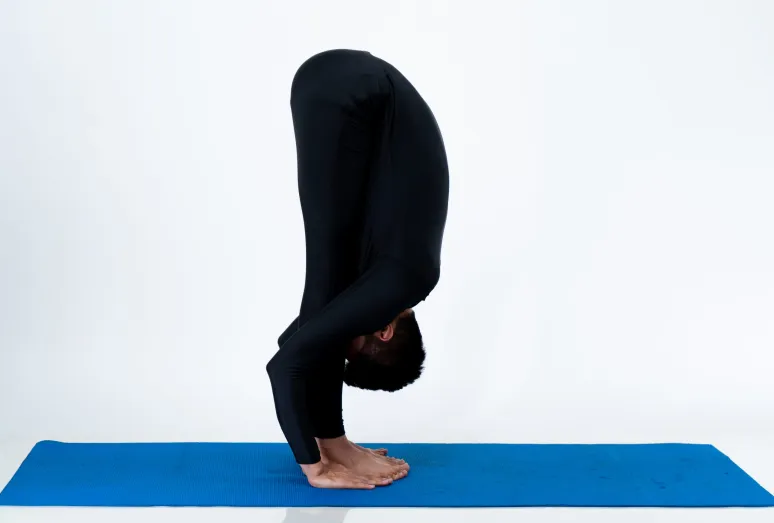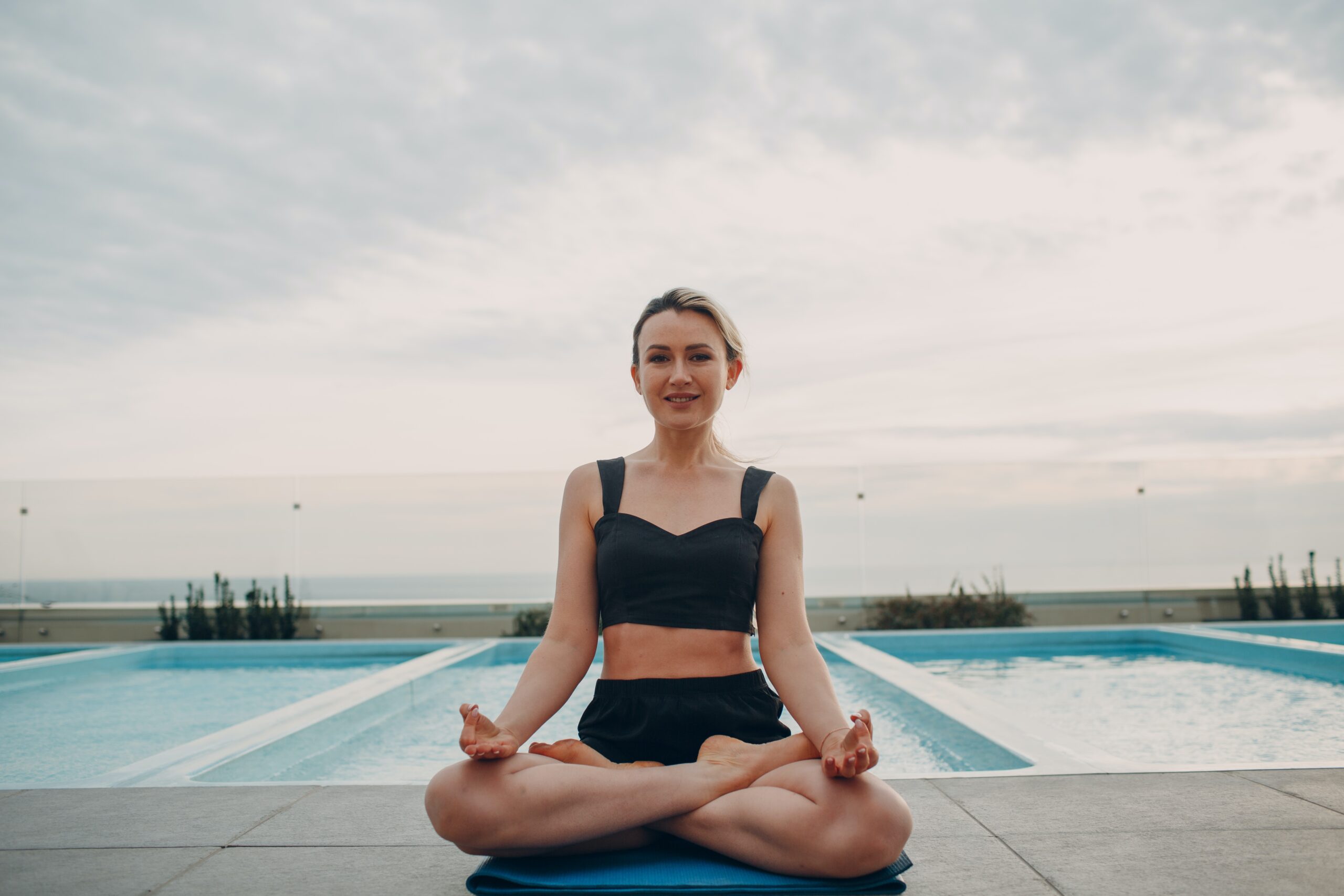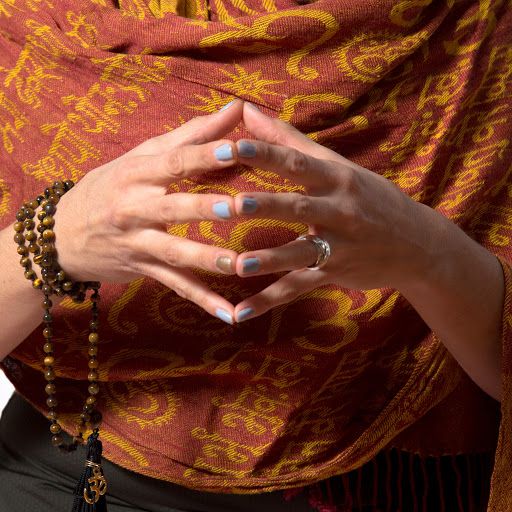Uttanasana, or Standing Forward Bend, is a foundational yoga pose seen in a variety of yoga sequences, including conventional Hatha Yoga and the energetic Ashtanga Vinyasa Yoga.
This asana is often utilized as a transitional position, a resting pose, or a standalone practice to stretch and revitalize the body. Its name is a combination of three Sanskrit words: “Ut,” indicating intensity; “Tan,” meaning to stretch or lengthen; and “Asana,” meaning posture. When combined, Uttanasana results in a severe stretch position, reflecting the deep forward bending action required.
Table of Contents
ToggleThe anatomy of Uttanasana.
To understand the advantages and proper practice of Uttanasana, it is necessary to examine the anatomy involved in this position. The posture focuses on the muscles of the posterior chain, such as the hamstrings, gluteus maximus, and the muscles along the spine. Correctly engaging these muscles may improve flexibility, strength, and alignment in the poses.
The forward bend begins with hip flexion, which requires flexibility in the hamstrings and extensibility in the lower back muscles. For individuals with tight hamstrings, gently bending the knees allows for a more comfortable forward fold, which reduces tension on the lower back. Uttanasana also works the abdominal muscles, which support the body in the forward bend and protect the lower back by maintaining a little engagement, or mula bandha (root lock).
Benefits of Uttanasana
Practicing Uttanasana has several physical and mental advantages. Physically, it stretches and strengthens the muscles in the legs and hips, increases spinal flexibility, and helps to reduce stress in the neck and shoulders. The posture also stimulates the stomach organs, which aids digestion, and the forward bend boosts blood flow to the brain, supplying it with fresh oxygen and nutrients, which may help relieve stress, exhaustion, and moderate depression.
Mentally, the forward fold promotes reflection and serenity, which helps to relax the mind and alleviate worry. This makes Uttanasana not just a physical exercise but also a meditation that promotes mental clarity and calmness.
Learn More: Benefits of Hasta Uttanasana
A step-by-step guide.
Proper technique is essential for getting the most out of Uttanasana and avoiding injury. Here are the step-by-step instructions:
- Begin in Tadasana (Mountain Pose) by standing tall with your feet hip-width apart and pushing hard into the ground with all four corners of your feet. Draw your navel gently inward to engage your core muscles.
- Inhale and Reach Up: Extend your arms above, pointing your fingers toward the ceiling while lengthening your spine.
- Exhale and Fold Forward: Hinge from your hips and gently fold your body forward while keeping your back long and flat. Allow your head to hang freely, allowing the weight of your body to draw you down.
- Find Length in Your Hamstrings: Instead of pressing your head to the floor, focus on extending your hamstrings. If you have tight hamstrings, bend your knees slightly to keep your back flat.
- Rest Your Hands: Depending on your flexibility, you may rest your hands flat on the floor next to your feet, on your shins, or even on blocks for support.
- Engage Your Core and Lengthen: Keep your core slightly engaged to avoid lower back sag. Inhale deeply and lengthen your spine.
Common Mistakes
Avoid typical blunders, which include rounding the back, which strains the spine, and locking the knees, which puts stress on the knee joints. Also, don’t overextend; the purpose of Uttanasana isn’t to push the body into what we think of as the “perfect shape,” but to discover a version of the posture that works for our individual body.
Integrating Uttanasana into Your Practice
Uttanasana may be performed as a solitary pose, particularly as a mild stretch at any time of day, or as part of a yoga sequence. In Sun Salutations, it is often used as a transition position and may be combined with Ardha Uttanasana (Half Standing Forward Bend) for a complimentary stretch.
Contraindications
While Uttanasana is typically safe, anyone with back ailments, herniated discs, or severe sciatica should exercise care or seek the advice of an experienced yoga instructor. Pregnant yoginis should also adapt the position to fit their changing bodies or seek advice from a healthcare expert before practicing.
Final Thought
Uttanasana is more than simply a physical stretch; it connects to greater self-awareness and mindfulness. As with every yoga posture, the key to a successful practice is a combination of patience, perseverance, and attention. By respecting our bodies’ boundaries and steadily expanding our practice, Uttanasana may provide substantial advantages, improving not only our physical well-being but also our mental and emotional moods. Whether you’re a seasoned yogi or a novice, including Uttanasana in your practice may lead to a more balanced, healthy, and thoughtful life.





No Comments